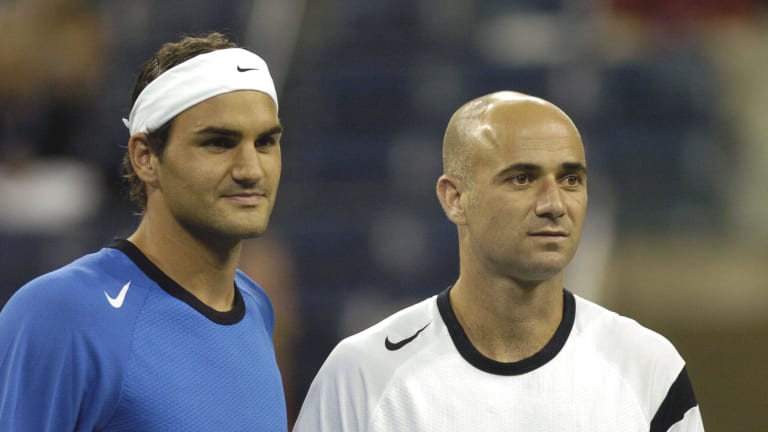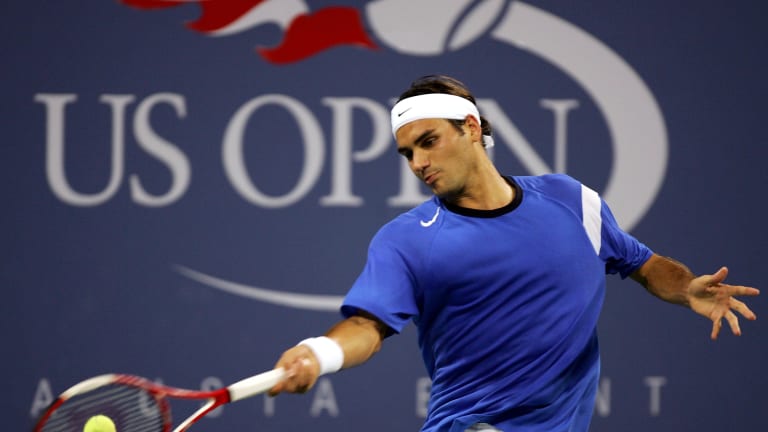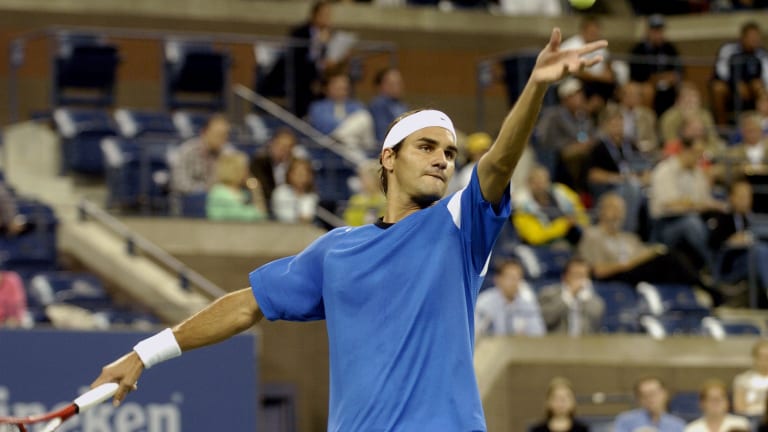THE MOMENT: Though Federer won his first Grand Slam title in 2003, he wouldn’t firmly establish his dominance—and arguably lay down his career opus—until the following season. In the first eight months of the year, he captured eight titles, including two of the first three major wins, and began his longest stretch atop the ATP rankings. Despite defeats at Roland Garros and the 2004 Summer Olympics in Athens, he amassed an audacious 60-6 match record heading into the US Open.
New York was the final frontier for Federer, the only major where he had yet to surpass the fourth round, the stage at which he’d bottomed out in 2003 to early-career nemesis David Nalbandian. A heavy favorite to end that streak after winning the Canadian Masters 1000 title over Andy Roddick, he eased into the quarterfinals after receiving a walkover from Andrei Pavel.
Awaiting him in the last eight was Andre Agassi, the man who defined lights, camera and action for a generation of tennis fans. Where Pete Sampras won 14 major titles with his serve, Agassi won eight off the strength of a precise return—and at 34, was still contending for more.
Federer had won his last three meetings against the sixth-ranked American veteran, most recently in Indian Wells earlier that year, from a set down. In the middle of a rainy second week at Flushing Meadows, the two began their quarterfinal clash late in the evening on Arthur Ashe Stadium, and Federer out-rallied Agassi to break first and serve out the opening set.


